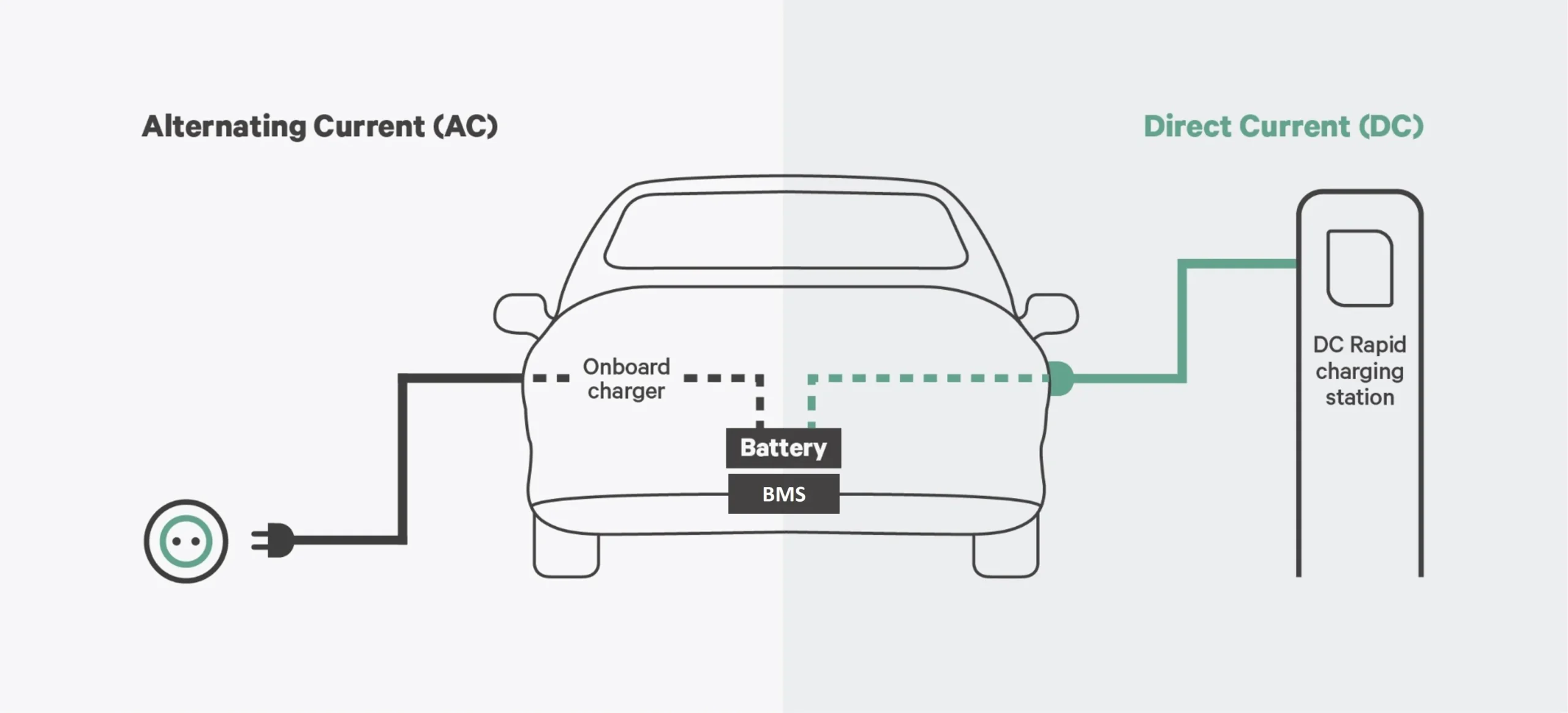As India steadily marches toward an electrified transportation future, establishing a robust and standardized charging infrastructure has become pivotal. Electric vehicles (EVs) are not just on the roads—they represent a new chapter in sustainable mobility. In India, the charging systems powering these vehicles are designed to deliver safety, efficiency, and interoperability while aligning with both domestic needs and international standards.
Table of Contents
- The Spectrum of EV Charging
- Standards and Specifications
- The Role of Technology and Policy
- Advancements and Future Outlook
- Want To Know More About EV
- Conclusion
The Spectrum of EV Charging
EV charging infrastructure in India follows a tiered approach, with systems classified into different “levels” based on voltage, power output, and intended usage. Generally, there are three primary categories:
- Level 1 Charging (AC Charging): Level 1 charging typically runs on a standard 240 V supply and is intended for home setups or low-demand scenarios. With power outputs usually up to 3.5 kW, these systems are ideal for overnight charging. Such chargers use standards like Type 1 connectors and follow specifications — such as those laid out by the Bharat AC-001 standard — to ensure safety and consistency across manufacturers.
- Level 2 Charging (AC Charging): Stepping up the game, Level 2 charging stations operate on higher voltages (generally in the 380‑400 V range) with power outputs of up to 22 kW. These chargers are often found in public parking lots, workplaces, malls, and other spaces where faster charging is required. Level 2 chargers are versatile, accommodating various connector types including the internationally recognized Type 1, Type 2, and GB/T, as well as the Bharat AC-001 standard developed for local applications.
- Level 3 Charging (DC Fast Charging): For EV drivers pressed for time, Level 3 charging provides high-power direct current (DC) charging solutions. With voltage ranges typically between 200‑1000 V and power outputs that can reach up to 400 kW, these systems can significantly reduce charging times. Most fast chargers today support multiple protocols such as CHAdeMO and the Combined Charging System (CCS), ensuring compatibility with a wide range of vehicle models. This ultra-fast charging is particularly crucial for commercial applications and public charging networks.
A quick overview in table form:
| Charger Type | Voltage Range | Power Output (kW) | Usage | Standard/Connector |
|---|---|---|---|---|
| Level 1 (AC) | 240 V | ≤ 3.5 kW | Home charging, low-demand EVs | Type 1, Bharat AC-001 |
| Level 1 (DC) | ≥48 V | < 15 kW | Low-power alternative | Bharat DC-001 |
| Level 2 (AC) | 380‑400 V | ≤ 22 kW | Public and workplace charging | Type 1, Type 2, GB/T, Bharat AC-001 |
| Level 3 (DC Fast) | 200‑1000 V | Up to 400 kW | Rapid charging for quick turnarounds | CHAdeMO, CCS1, CCS2 |
Table: Overview of EV Charging Systems in India
Standards and Specifications
Safety and interoperability are key in any charging infrastructure. In India, the National Institute for Transforming India (NITI Aayog) and the Bureau of Indian Standards (BIS) have played a significant role in establishing guidelines for charger standards and specifications. These standards not only protect consumers but also ensure that different charging solutions can operate seamlessly—whether at homes, commercial centers, or public stations 2.
For example, the Bharat AC and Bharat DC standards have been developed to create a unique Indian framework while still drawing from global best practices. By harmonizing local needs with international guidelines set by organizations like the International Electrotechnical Commission (IEC), India’s charging protocols facilitate cross-compatibility and help reduce trade barriers.
The Role of Technology and Policy
The rapid evolution of battery technology and power electronics also influences which charging systems are prioritized. Onboard chargers in electric cars are designed to handle specific AC-to-DC conversion tasks, and the corresponding external chargers must match these capabilities. Manufacturers often retrofit or design vehicles with an integrated charging system that can safely draw power from either home or public infrastructure, adapting to the availability of Level 1, Level 2, or DC fast charging stations.
Government initiatives have been pivotal. The Ministry of Power, for instance, revised charging infrastructure guidelines to ensure EV charging facilities are safe, reliable, and scalable. These guidelines aim to simplify the installation, operation, and maintenance of chargers across India. Public-private partnerships have also emerged to propel the expansion of EV infrastructure. Companies like Exicom have teamed up with software providers such as IONAGE to create a unified network that simplifies the user experience—making it easier for EV drivers to locate and operate charging stations irrespective of the network or technology used .
Advancements and Future Outlook
India’s charging landscape isn’t static. Startups and established companies are continuously innovating to deliver faster and more cost-effective charging solutions. A prime example is the work of Bengaluru-based Exponent Energy, which recently introduced a rapid charging system capable of charging an electric bus in as little as 15 minutes. While this breakthrough currently targets commercial vehicles such as buses and autorickshaws, similar architectural improvements could eventually trickle down to personal EV charging systems, further reducing downtime and enhancing vehicle usability .
Alongside these advancements, efforts are also underway to integrate smart systems that allow real-time monitoring, remote diagnostics, and even predictive maintenance of charging stations. These technologies will not only improve operational uptime but also help optimize the overall performance of the grid as the number of EVs on the road increases.

Want To Know More About EV
Charging Your Drive With Electrifying Insights?
Conclusion
India’s approach to EV charging systems is a reflection of its commitment to sustainable development and technological integration. By adopting and adapting global standards—whether through Level 1 home chargers, Level 2 workplace or public charging, or DC fast charging stations—India creates an environment where EV drivers can enjoy reliable and accessible energy regardless of their location. With continuous policy support, technological innovations, and collaborative public-private partnerships, the future of EV charging in India looks not only promising but also crucial in propelling the country toward a greener, more electrified future.
As these charging systems evolve, they will pave the way for enhanced mobility, reduce carbon emissions, and make electric driving a viable alternative for millions across India. Whether you’re a current EV owner or planning to join the electric revolution, understanding these charging infrastructures helps in appreciating the intricate ecosystem that powers your everyday journeys.
This comprehensive overview should offer you a clear explanation of how India’s EV charging systems are designed, implemented, and continuously improved to meet the growing demands of today’s electric mobility landscape. Would you be interested in learning more about the companies leading these innovative projects or insights into emerging battery technologies?
If you want to get any more information, then follow my Instagram account

